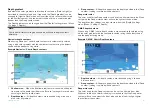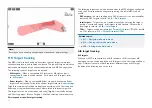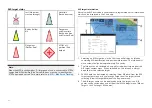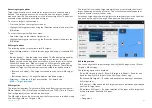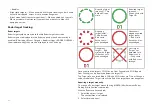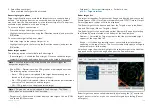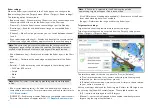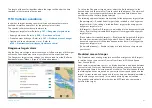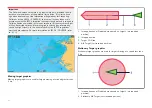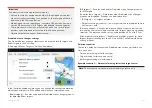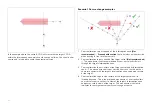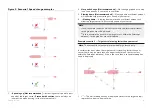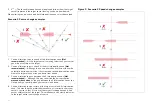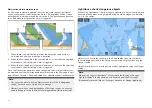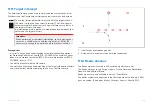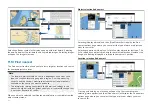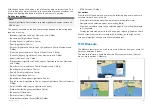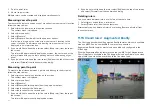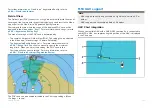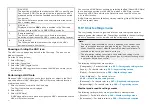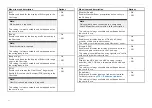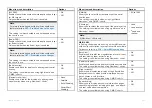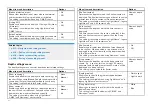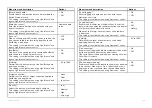
Figure 2. Scenario 1 Speed change examples
1.
(1)
Speeding up [Not recommended]
— Increasing vessel speed to pass
ahead of the target vessel.
Proceed with caution
, there is always an
inherent risk when passing in front of other vessels.
2.
No speed change [Not recommended]
— Not changing speed or course
is not an option as it can result in a collision.
3.
Slowing down [Not recommended]
— Slowing down a sufficient amount
will allow the target vessel to pass ahead of your vessel.
4.
(2)
Slowing down
— Slowing down more than a sufficient amount will
allow the target vessel to pass safely ahead of your vessel.
Note:
•
(1)
In this example the paths will still cross within the
[Intercept distance]
,
so the graphics are still displayed.
•
(2)
In this example the paths will no longer cross within the
[Intercept
distance]
, so the graphics are not displayed.
Example scenario 2 — Target vessel moving faster than your vessel
Note:
These scenarios are examples provided for guidance only.
In certain situations, when the target vessel is travelling faster than your
vessel, there may be more than one opportunity for your paths to cross
within the
[Intercept distance]
. If this is the case then a second Interception
zone is displayed.
1.
1
st
— The first Interception zone (displayed closest to the target vessel)
represents a bow-to-bow collision.
191
Содержание LIGHTHOUSE 4
Страница 2: ......
Страница 4: ......
Страница 20: ...APPENDIX C HARDWARE AND SOFTWARE COMPATIBILITY 478 APPENDIX D DOCUMENT CHANGE HISTORY 480 20...
Страница 414: ...414...
Страница 451: ...4 Select Delete again to confirm 5 Select OK YachtSense ecosystem 451...
Страница 484: ......
Страница 503: ......

